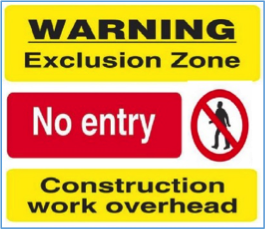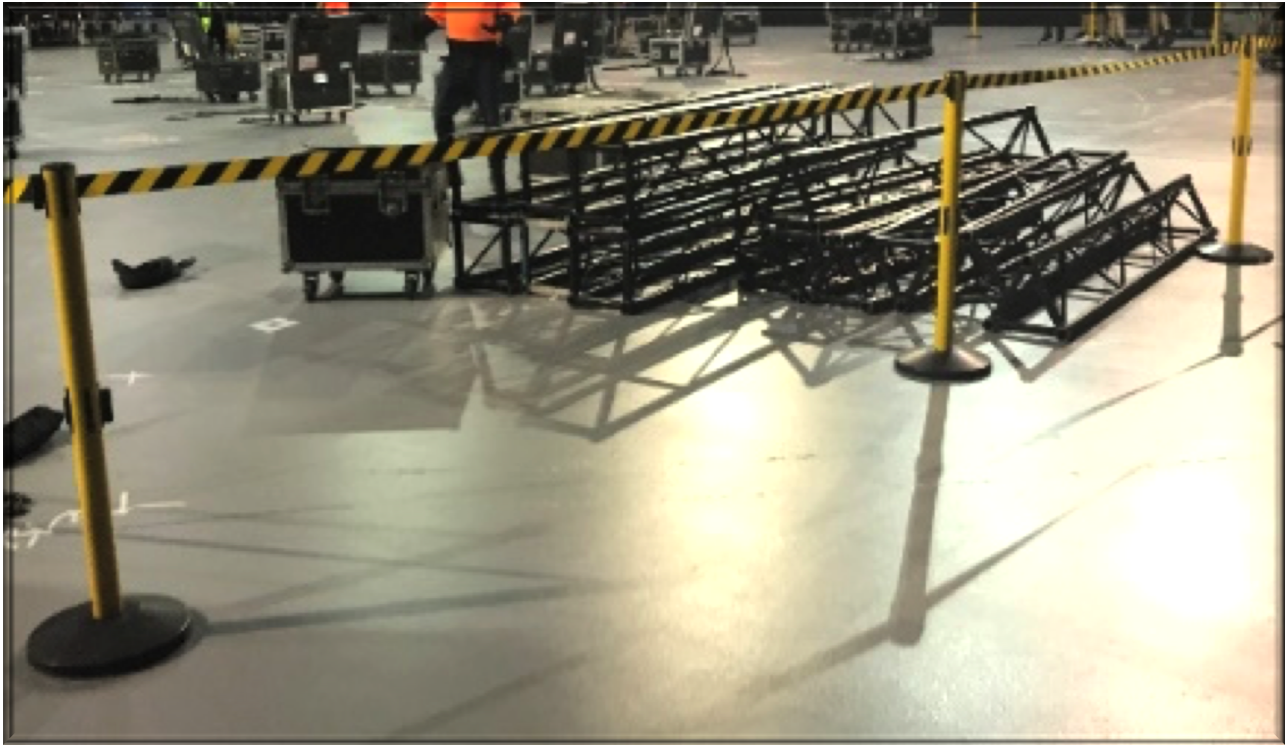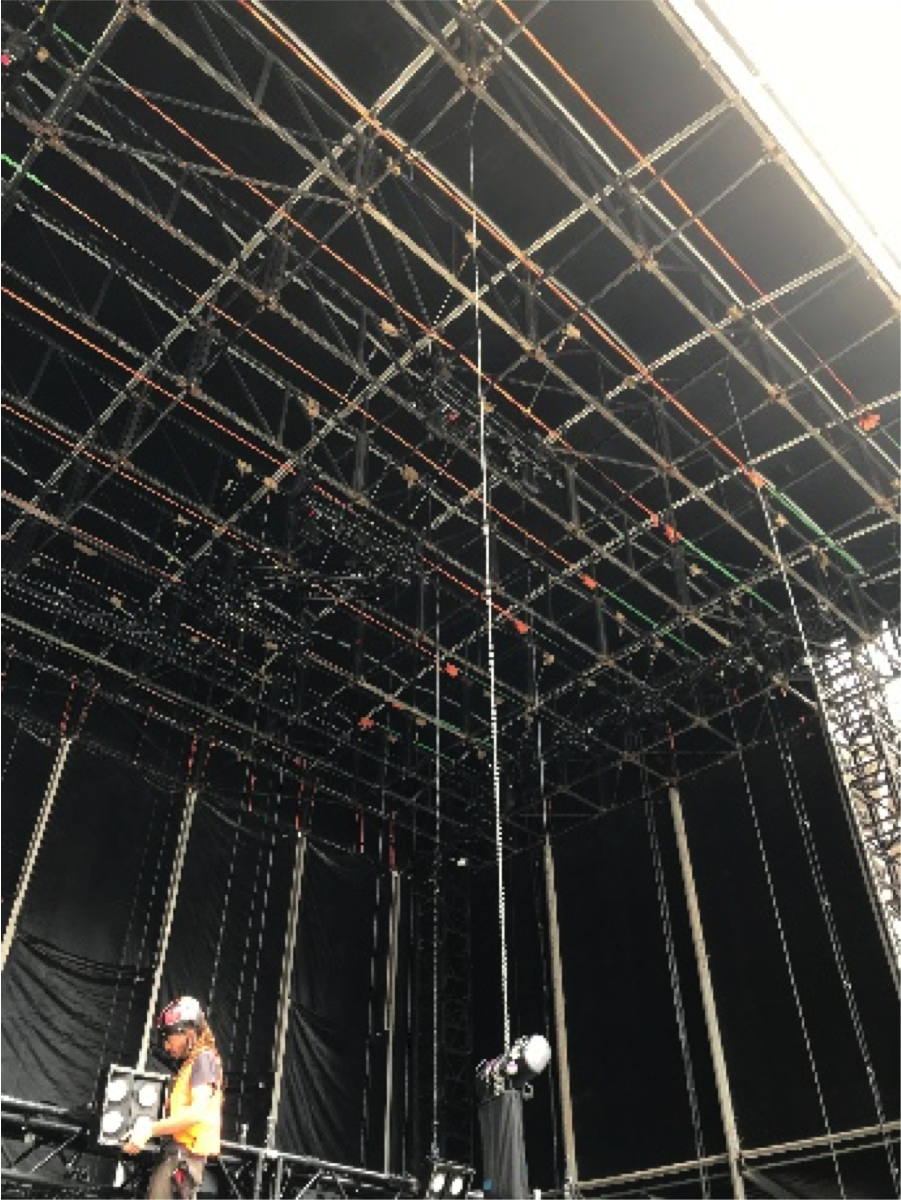Exclusion zones for work at heights in the event industry
Work at heights is performed constantly during construction, bump in and bump out of concerts. While riggers are working in the roof of the stage or the venue, a large amount of work and movement is happening on the stage or at ground level. This includes moving and unloading cases, setting up motors and video and lighting work.
Ground riggers are often expected to ensure they have clear areas around where they are working with the high riggers. But as they can be monitoring the movement of large, heavy motors, trusses, chains and equipment, they should not be expected to monitor foot traffic as well as performing their designated rigging work. Although there is some understanding by the workers and crews in this industry of the risks, there has been little done to establish exclusion zones.
When determining an exclusion zone, the distance a falling object may travel can be easily underestimated. Other structures can cause a dropped object to deflect and travel in an unexpected direction.
The establishment and management of exclusion zones should be documented in the safe work method statement and discussed during the toolbox talk. Exclusion zones continually change during bump in bump out as points are raised or lowered, so ongoing communication is imperative.
The following can be used to maintain the effectiveness of the exclusion zones:
- Keep unnecessary workers out of the exclusion zone while work is occurring overhead, or loads are moved.
- Situational awareness and good verbal and visual communication with those in the roof to ensure ground riggers and crew below are aware of movements.
- Witches hats, bollards, barriers, chains or ropes be put in place to reduce entry by the work crew and members of the public
- In addition to marking out physical exclusion zones, use adequate signage and placement of spotters to maintain exclusion zones on the ground
- Stopping overhead activities and ensuring all materials, tools and equipment are controlled if there is an unavoidable need for a person to be in the area.
- Administrative controls include
- keeping the work area tidy by ensuring materials and equipment not being used are put away
- training and supervision
- keeping as much equipment as possible at ground level, and tethering or securing tools and materials. Also use spotters to keep exclusion zones clear and identify the risk of falling objects.



These controls have been implemented by venues and touring companies to manage the risks:
- Designated traffic areas where no rigging work is being undertaken at the time - these will be moved as the rigging above is moved.
- Barriers to clearly identify exclusion areas.
- Toolbox talks advising of established exclusion zones.
- Ground riggers having a second rigger spot while loads are moving.